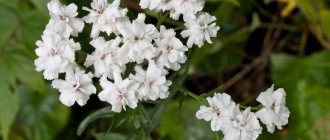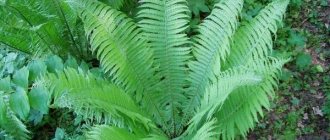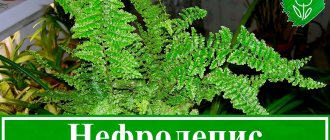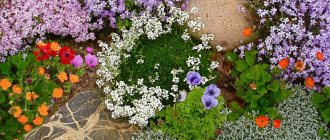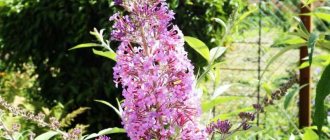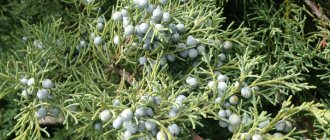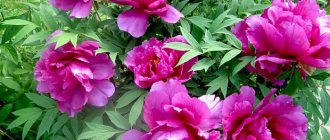Fern leaves can be alternate or opposite. The color of the frond is bright green. The underside of the leaf is covered with sori (groups of spores) that look like blurry dots. The bush in adulthood has a height of 12-30 centimeters. Of all the numerous genus, the most popular species for growing and caring for at home is the Adiantum Venus hair.
Description
Adiantum is a shrub about a meter tall. Spreading branches with dense foliage resemble voluminous curly hair , hence the plant’s nickname.
The leaves on the petioles are located opposite each other. The edges are often cut, and the surface has a glossy shine due to the water-repellent layer. The size of the branches depends on the variety and can reach half a meter in length and width.
The lower surface of the leaf blade is darker than the upper. On it, along the veins, there are small spores covered with a thin film with a rough surface. The root system consists of very thin roots growing almost parallel to the surface of the earth.
Properties
The plant is grown as an ornamental shrub; its medicinal properties are actively used in folk medicine and are included in the pharmacopoeia. Adiantum shoots contain:
- flavonoids – plant polyphenols, strengthen the walls of human blood vessels;
- phenolcarboxylic acids – have antibacterial properties, help relieve inflammation in diseases of the gastrointestinal tract, respiratory and urinary systems;
- essential oil – has an antipyretic and antioxidant effect.
Adiantum juice compresses are used to treat trophic ulcers and detoxify animal bites. A decoction of the shoots is used to rinse hair to prevent hair loss, to get rid of dandruff and make it silky.
Types and varieties
Adiantum is very diverse in leaf shape and size. There are more than 200 plant species, each with several more varieties.
The 18 most striking and original representatives of adiantum are popular among flower growers .
Adiantum stopiform
The stop-shaped adiantum reaches a height of a quarter of a meter. The elongated oval green leaves are located very close to each other on a long horizontal branch. When choosing herbaceous plants for open ground, you can safely purchase this variety.
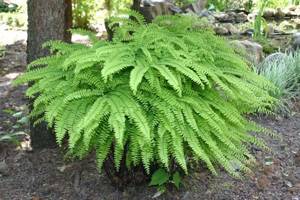
Adiantum capillus-veneris
A common species for growing on home windowsills. The length of the leaf plate is from 2 to 4 cm. Their interesting shape makes an impression: the wedge-shaped base expands towards the apex, the edges of which are split into several segments.
The branches grow up to 30 cm in length, and the petioles on them are about 15 cm. The color of the shrub is uniform (light green).
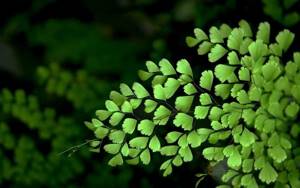
Fragrance
The fast-growing bush reaches half a meter in size. Oval-shaped leaves of a rich green hue.
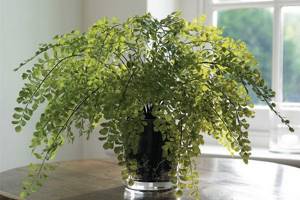
Adiantum venustum (A. Venustum)
Adiantum venustum has long branches (up to 40 cm) with purple petioles. The leaves are ovate-shaped with a whole edge. Suitable for growing in open flowerbeds, it is frost-resistant.
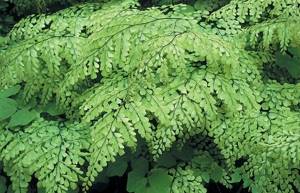
Ethiopian maidenhair
The first species among all ferns. Described by Linnaeus in the 18th century and lives in Australia and Africa in the highlands.

Adiantum caudate
Adiantum caudate has long branches up to 60 cm with slightly dissected leaves. They hang down immediately from the base of the pot, like hanging flowers, so the plant looks impressive in a flower pot.
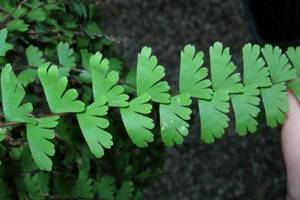
Wedge-leaved (Lady Geneva variety)
This type of adiantum is very similar in appearance to Venus hair: the shape of their leaves is similar, but differs in their wavy surface and slight curling. The black petioles have leaf blades attached one above the other, giving the appearance of fish scales.
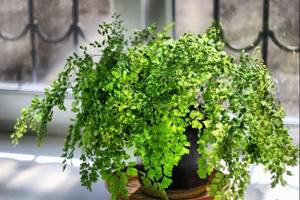
Wedge-shaped variegated
Tall fern up to 1 m in height. It is original in its color: the petioles have a blue-violet tint, and the leaf blade is dark green with contrasting white stripes.
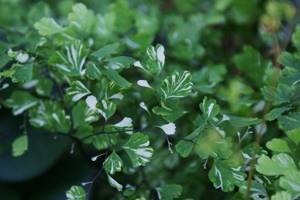
Adiantum macrophylla
A fern with a telling name. The plate is 5–8 cm long, pointed at the apex. The color of the leaves of a young adiantum is pink, while that of an adult becomes green.
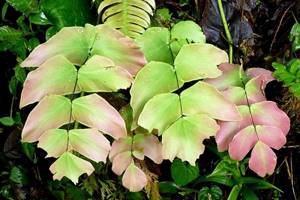
Adiantum micropinnulum
The tender branches grow horizontally and are covered with wedge-shaped green leaves.
The whimsical appearance of Adiantum is demanding in terms of maintenance conditions: it does not like wet soil oversaturated with lime or fluorine. Reacts negatively to leaf spraying.
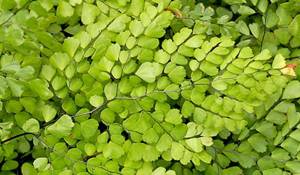
Adiantum tender
The delicate type of adiantum is also found under the name “Pink”. The leaves are wedge-shaped with feathery dissected edges. The branches twist strongly and form a lush bush. Interestingly, despite the name, it adapts well to ordinary apartment conditions.
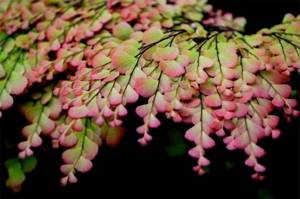
Adiantum finely pubescent (finely hairy)
Finely pubescent adiantum differs from other species in its short pile, covering the leaves on both sides.
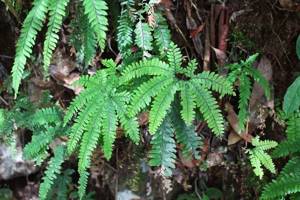
Adiantum is beautiful
The oval leaves are divided into dark green lobes. Spores in this species are formed on the upper surface of the leaf blade. The branches reach half a meter in length.
The Lisa variety adapts well to the home microclimate.
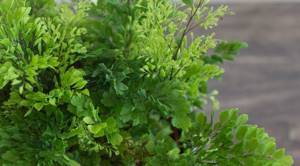
Adiantum transparent (A. diaphanum)
The fern, about 40 cm in height, has feathery branches with oval leaves that are concave at the base and rounded at the top. Spores also appear on the outside of the leaf.
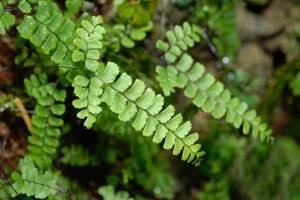
Adiantum reniforme (A. reniforme)
An original kidney-shaped appearance with wide, rounded leaves on elongated branches. There are both dwarf specimens (5 cm) and regular sizes (up to 30 cm).

Adiantum Ruddy (A. raddianum)
Adiantum Ruddy has horizontally growing branches with small leaves divided into rounded segments.
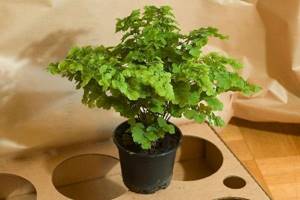
Adiantum Raddi fragrantissimum (A. raddianum fragrantissimum)
The Fragrance variety of adiantum Ruddy has large branches up to 70 cm with larger light green leaves.
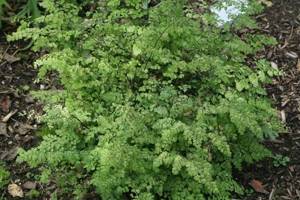
Chilean (A. chilense)
Named after the region of its natural habitat. Capable of growing in mountains at an altitude of 2 km. The shrub reaches a size of 40 cm. The leaves are curled in a wave and have jagged edges.
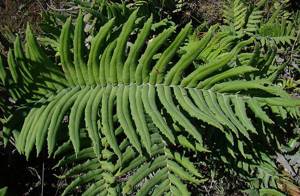
Adiantum stop-shaped: description
The soils are preferably slightly acidic and loose, rich in humus. These are the most beautiful and graceful fern herbaceous plants. Loved by breeders. Today, 4 quite attractive varieties have been developed, some of which can also be grown at home.
A distinctive property of Adiantum is its high cold resistance. Good open ground tolerance. It retains its decorative qualities right up to frost and can withstand temperatures down to -35 degrees Celsius without additional protection. This quality allows gardeners to decorate their greenhouses with this flower from the southern regions to the center of Russia.
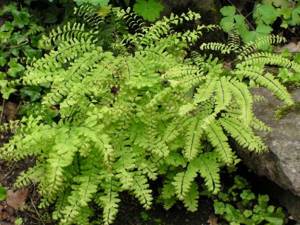
In addition to having excellent decorative properties, maidenhair is also used for medicinal purposes. It contains substances that help to more quickly cure diseases of the respiratory system and helps with coughs. There is a photo of the plant in the article.
Home care
To grow a beautiful plant, like in the photo, you need to follow simple rules of care.
Light
In their natural habitat, ferns grow in the shade of the crowns of large trees, which shelter them from the sun. In an apartment, such lighting is created on the north or west window.
An alternative place for the adiantum would be a table or stand at a distance of a meter from windows in other directions. Ampelous species will look beautiful in hanging flower pots next to the window opening.
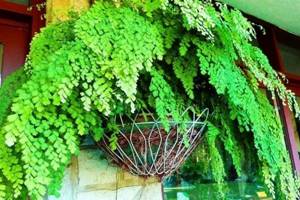
Temperature
The optimal temperature regime for the growth of adiantum is the range of 20...22 °C .
At higher rates, it will be necessary to increase air humidity, especially in the summer and heating season. Carefully! Some species do not tolerate spraying well, so it is especially important for them to maintain the required temperature or install a humidifier.
In winter, a temperature drop of up to 15 °C is permissible. If the soil or air cools below 10 °C, the plant begins to slowly die.
Important! Do not create drafts in the room where the plant is located. It is recommended to remove the pot from the room while airing.
Tobacco smoke and exhaust gases are destructive to the delicate foliage of adiantum. It is not recommended to keep the plant in the kitchen .
Air humidity
It is recommended to artificially increase air humidity when it becomes too hot. To do this, the plant is lightly sprayed in the early morning or late evening hours.
You can place a wide container of water near the pot under the foliage or install a humidifier nearby.

Watering
Water the adiantum when the soil dries out. There are 2 options for soil moisture :
- The usual watering of the earthen coma from a watering can. Before this, the water should stand for 2-3 days in an open container. If tap water is hard, then it is softened with apple cider vinegar (1 teaspoon per liter), otherwise excess lime will worsen the condition of the soil and roots. It is useful to use rain (snow) water.
- Place the pot in a bowl of warm water, immersing it to 2/3 of the height of the flowerpot. Moisture will be absorbed by the ground from the bottom in the required amount, which will prevent waterlogging. It is important that the pot has large drainage holes. The plant can be removed only after the soil surface has been moistened. It is recommended that excess liquid be subsequently drained in a sink or bathtub.
Top dressing
For adiantum, monthly application of universal fertilizers is sufficient. The dose recommended on the package can be halved to prevent the soil from acidifying. In the autumn-winter months (October - March) feeding stops completely .
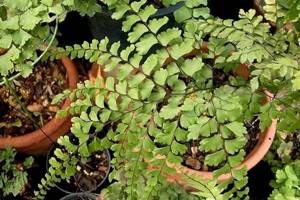
The soil
The substrate for healthy growth of adiantum is required to be loose and slightly acidic. It is easy to prepare from 2 parts of soil and the same volume of peat. By adding another 1 part of river sand, the soil will become more breathable.
Possible difficulties
If the conditions of detention are not observed, you may encounter the following problems:
- Brown and dry edges of leaves are observed with a lack of watering or high concentrations of harmful gases in the air (from smoking, fumes during cooking).
- Leaf fall occurs at low humidity and high indoor temperatures.
- The pallor of the leaves , oddly enough, is associated with excessively intense lighting.
- Curled foliage without falling indicates excess moisture.
- Yellowing of the leaves indicates the need to increase watering or fertilize.
Care
Adiantum does not tolerate cold drafts or dust. Where fern grows, it is not recommended to smoke, as it is sensitive to combustion products. You can’t rearrange or move the flower pot often, he doesn’t like it.
Adiantum is suitable for growing at home and is not dangerous to humans. In isolated cases, allergic reactions to the spores may occur. At the first signs, you should remove the plant from the room and consult an immunologist or therapist.
Lighting
All ferns need diffused, soft lighting. Direct sunlight is harmful to Adiantum. The indoor plant should be placed on eastern, northern window sills . There it feels great, without feeling high temperatures. If it is not possible to organize suitable care, then you can cover the window with paper with perforations (holes). It is also a good idea to place a pot of fern on a cabinet or table near a window. The main thing is that the flower has enough light, otherwise it will lose its beauty.
Temperature
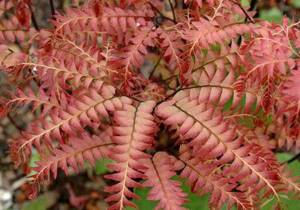
He calmly tolerates temperature differences between day and night. This is how the fern grows and develops quickly. It will be good if you provide him with these conditions. You should not expose Adiantum to sudden temperature changes or summer heat. This needs to be especially monitored. In winter, temperature values should not be lower than + 12 degrees. When there is cool air in the room for a long time, you should monitor the condition of the soil in the pot. It is impossible to over-moisten the soil in such conditions; there is a risk of rotting of the root system and the appearance of mold.
Humidity and watering
During the summer months, ferns should receive watering up to 3 times in 7 days. It is necessary to constantly maintain the moisture of the earthen coma . In autumn and winter, the plant is usually in a state of rest and dormancy. Its vegetation (growth and development) becomes slow, so watering is reduced to once a week.
When the adiantum is kept in a cold room, humidification is carried out extremely rarely. Watering should only be done with water that has stood for 12 hours. But severe drying of the substrate also leads to the death of the plant. The necessary balance must be maintained.
Do not place ferns near heating radiators!
Ferns are moisture-loving representatives of tropical flora. But they adapt very well and quickly to the proposed conditions. Comfortable average temperature for adiantum is + 22 degrees Celsius. When the room is hot, the plant requires daily spraying. You can additionally use containers with wet sand or expanded clay. The pot must be placed so that the bottom does not come into contact with water.
Another way is to place jars of water in the room or turn on a special humidifier. Adiantum responds well to a shower with warm water . In this case, the surface of the soil should be covered with plastic film.
Top dressing

This is done in the spring in April and until September inclusive. Liquid complex fertilizers are used for decorative foliage plants grown at home. The dose recommended in the instructions must be divided in half. Apply fertilizing once a month. In winter, the indoor plant rests, so there is no need to fertilize it.
Trimming
Only old dry or damaged branches need to be removed . If the bush dries out completely, simply cut it back to the ground. With frequent watering and regular spraying of the stumps, new shoots with leaves will soon appear. Also, daily spraying contains adiantum in its pure form. Some people use preparations to gloss the leaves, but this should not be done. Any chemical is harmful to the plant.
Transfer
It is better to replant adiantum in the spring, in March-April. At this time, the fern's vegetation is still weak. The plant needs to be removed from the pot, shake off the roots from the old soil. Inspect carefully, if you need to cut off old damaged parts. Take the new container wider than the old pot, about a finger width. Drainage should be laid at the bottom, the substrate should be low acidity. You can create it yourself:
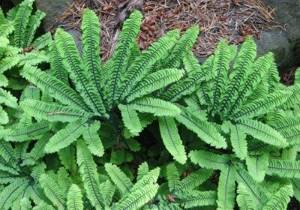
- Turf.
- Coarse sand.
- Peat land.
- Leaf humus.
Take the components in equal parts. When replanting an indoor flower, you should not compact the soil too much . The roots of the plant must receive enough air. To do this, it is advisable to sometimes loosen the root zone in the pot.
It is better to purchase a container for transplanting maidenhair from wood or ceramics not covered with glaze. The pot should be spacious, with many holes for water drainage. This is a prerequisite, since the plant has powerful roots.
Priming
Ferns are suitable for soil for growing orchids, to which universal soil is mixed. To make the soil mixture nutritious for the plant, humus is added. Adiantum loves light soil, which consists of the following components:
- Peat - 2 parts.
- Leaf soil - 1 part.
- River sand - 1 part.
- Humus - half of the part.
Drainage in the pot must be done in a thick layer.
Pests
Adiantum contains special phytoncides in its foliage that repel parasites. But with poor care, their content decreases significantly, and the plant can be attacked by various pests:
- Scale insects are visible to the naked eye. To combat insects, they are mechanically removed with a damp cotton swab, and the entire plant is sprayed with an alcohol-containing solution.
- Aphids look like a cluster of pests. They need to be removed with soapy water. After half an hour, rinse the adiantum with clean water. If the procedure is ineffective, the plant is sprayed with the Inta-Vira or Fitoverma insecticidal solution.
- Mealybugs appear as white spots and are destroyed by spraying with any insecticidal agent.
- Spider mites appear at high air temperatures combined with low humidity. The struggle comes down to adjusting these microclimate parameters and spraying with Fitoverm.
Important! Any treatment against insects is carried out twice with an interval of 7–10 days with mandatory spraying of the ground surface.
Diseases and pests
Despite the relative unpretentiousness of ferns, maidenhair ferns (if watering, light and fertilizing regimes are not followed) can get sick and be damaged by flower insects. One of the first signs of Venus hair disease is the dried or yellowing (blackening) tips of its carved leaves, in addition, the plant unnaturally droops its leaves or begins to dry out.
Never keep maidenhair in a draft!
The plant is affected by pests if:
- a characteristic cobweb appears on the back of the leaves, the leaf curls (spider mite);
- on the trunk and leaves you can see small greenish insects with wings (aphids);
- colonies of small brown insects (scale insects) appear on the trunk;
- there is a white coating on the leaves that looks like flour, the plant becomes slippery and sticky (mealybug).
The causes of pests and diseases, as well as ways to get rid of them, can be found in more detail in the table below.
Table: prevention of fern diseases
| Diseases and pests | Causes | Prevention measures |
| The leaves are turning yellow | Low air humidity | Increase humidity: spray, pour settled water into the pan |
| Leaves wither | Improper watering | Water more regularly |
| The tips turn black | Draft, hypothermia of the plant | Change location |
| The leaf turns pale | Direct sunlight | Place the plant in partial shade |
| Spider mite | Indoor air is too dry | Wash the leaves, increase the humidity: spray, add drainage to the pan, moisten |
| Aphid | Dry air, overflow | Treat with Fitoverm, Derris, Detis |
| Shchitovka | Dry air | |
| Mealybug | Overflow | Wipe the leaves, sprinkle with Aktara, Aktelik, Fitoverm |
Video: first-hand information about improper care of adiantum
Transplantation and propagation
Even a young plant needs replanting no more than once every 2 years, which is due to slow growth. An increase in the volume of the pot is required only after the roots have sprouted through the drainage holes.
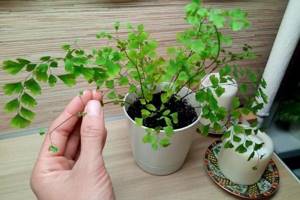
Features of transplantation
When transplanting adiantum, it is recommended to take into account the following features:
- The plant feels better in a cramped container.
- The root system of Venus's hair is characterized by strong growth with simultaneous fragility of the roots.
- When choosing a pot, preference should be given to a ceramic container without an internal glaze coating. Its width must exceed its height.
- Large holes are required at the bottom for bottom watering.
The procedure itself is carried out in early spring and looks like this:
- The day before, the plant is watered so that the earthen clod can be easily removed from the pot.
- The bottom of the new container is filled with drainage.
- A fresh substrate 2–3 cm thick is compacted on top.
- The plant is turned over and held with the palm of your hand. The adiantum is shaken out of the pot with a gentle tap.
- Together with the old soil, the plant is installed in the center of the new container and covered with new substrate from the sides.
- It is recommended to put the transplanted flower in a cool shade for a week and water it only after all the moisture has been absorbed.
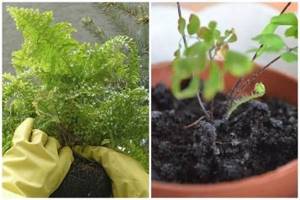
Adiantum propagation
Venus hair can be propagated in two ways:
- By dividing the bush during the next transplant. The rhizome is cut and sprinkled with charcoal powder. This method is used only for mature plants with a large number of new growth points. This method will destroy a young bush.
- For propagation by seeds, mature spores are collected from the lower surface of the leaf blade. They are germinated in a shallow container filled with a mixture of peat and sand (2:1). To disinfect the soil, pour boiling water over it and then cool to room temperature. The spores are sprayed with a solution of potassium permanganate to prevent fungal infections.
Seeds are sown on the surface of a moist substrate and covered with film. If possible, keep the greenhouse in a dark place at a constant temperature of 21 °C. Shoots are expected from 1 week to 3 months.
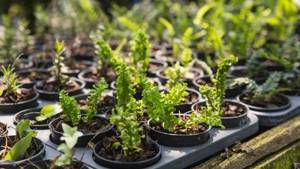
After the green shoots sprout, the film is removed from the greenhouse and it is transferred to a bright place without bright sun.
Information! The strengthened sprouts are planted in separate pots, several at a distance of 3–4 cm from each other.
Adiantum propagation
Adiantum can be propagated both by spores (it does not produce seeds) and vegetatively.
Disputes
The method is considered labor-intensive, not only because of the length of the process, but also because of the need to create greenhouse conditions. Seed material (spores) is collected either in early March or in August - this is the time of their ripening. To do this, you need to cut off a healthy leaf with well-defined ripe spores and scrape them onto paper. You can store seed material without loss of germination for years. Sowing is done in boxes with a moistened and heated substrate (it is not necessary to sprinkle with soil), cover the top with film or glass. You need to place the box in a warm place so that the soil temperature does not drop below +20C. Glass (film) must be removed every day for ventilation and removal of condensation.
Young shoots will appear after about a month, after which the shelter must be removed immediately. The place should be well lit, but not in direct sun. As they grow, the strongest and healthiest young shoots are left; weaker shoots are cut off with sharp scissors to the ground level. When the sprouts become stronger, they are planted in separate containers.
Dividing the bush
The easiest and fastest method, however, it requires special care due to the increased fragility of the plant. Each part of the bush must have a full-fledged shoot with a rhizome and at least two restoration buds. The best period for this work is the same as for collecting and sowing seeds.
